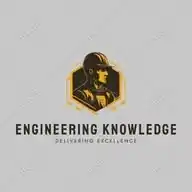
Mechanical Engineering World
February 2, 2025 at 02:54 AM
*Centrifugal pump commissioning & installation:*
Commissioning and installing a centrifugal pump involves several steps to ensure proper functionality and performance. Here's a general guide:
*Centrifugal pump technical questions & answers pdf document*
*Download PDF:* https://www.mechanical-knowledge.com/2023/04/centrifugal-pump-technical-questions.html
_*1. Pre-Installation Inspection:*_
- Inspect the pump and associated components for any visible damage incurred during transit.
- Ensure all parts and accessories required for installation are present.
_*2. Location Selection:*_
- Choose a suitable location for the pump considering factors such as accessibility, ventilation, and proximity to the fluid source.
_*3. Foundation Preparation:*_
- Prepare a solid, level foundation capable of supporting the weight of the pump and motor assembly.
- Ensure proper alignment with the connected piping system.
*Pump cavitation and solutions pdf document*
*Download PDF:* https://www.mechanical-knowledge.com/2023/03/pump-cavitation-and-solutions-pdf.html
_*4. Piping Installation:*_
- Install the suction and discharge piping, ensuring they are correctly sized, supported, and aligned.
- Use appropriate fittings, gaskets, and sealing materials to prevent leaks.
_*5. Electrical Connection:*_
- Connect the pump motor to the power source according to the manufacturer's specifications.
- Ensure proper grounding and protection against overloads.
_*6. Alignment:*_
- Align the pump and motor shafts using precision alignment tools to minimize vibration and wear.
- Follow the manufacturer's guidelines for alignment tolerances.
*Types of pumps and its applications pdf document*
*Download PDF:* https://www.mechanical-knowledge.com/2023/03/types-of-pumps-and-its-applications-pdf.html
_*7. Coupling Installation:*_
- Install the coupling between the pump and motor shafts, ensuring proper fit and alignment.
- Tighten coupling bolts to the recommended torque values.
_*8. Prime the Pump:*_
- Fill the pump casing and suction piping with the fluid being pumped.
- Vent any air pockets to ensure proper priming and prevent cavitation.
_*9. Startup:*_
- Gradually start the pump motor and monitor for any unusual vibrations or noises.
- Verify that the pump is operating within the specified operating parameters (flow rate, pressure, etc.).
*Pump system design pdf document*
*Download PDF:* https://www.mechanical-knowledge.com/2023/03/pump-system-design-pdf-document.html
- Adjust speed or impeller diameter if necessary to achieve desired performance.
_*10. Performance Testing:*_
- Conduct performance tests to verify that the pump meets the required flow and head specifications.
- Measure power consumption and compare it to the manufacturer's data.
_*11. Safety Checks:*_
- Ensure all safety guards and covers are in place.
- Verify that safety devices such as pressure relief valves and temperature sensors are functional.
_*12. Documentation:*_
- Keep comprehensive records of the installation process, including alignment measurements, test results, and any adjustments made.
*Pump maintenance and troubleshooting pdf document*
*Download PDF:* https://www.mechanical-knowledge.com/2023/03/pump-maintenance-and-troubleshooting.html
- Update operating manuals and maintenance schedules as necessary.
_*13. Training:*_
- Provide training to operators on the proper operation, maintenance, and troubleshooting procedures for the centrifugal pump.
_*14. Maintenance Schedule:*_
- Establish a regular maintenance schedule, including tasks such as lubrication, alignment checks, and vibration analysis, to ensure the long-term reliability of the pump.
👍
❤️
8